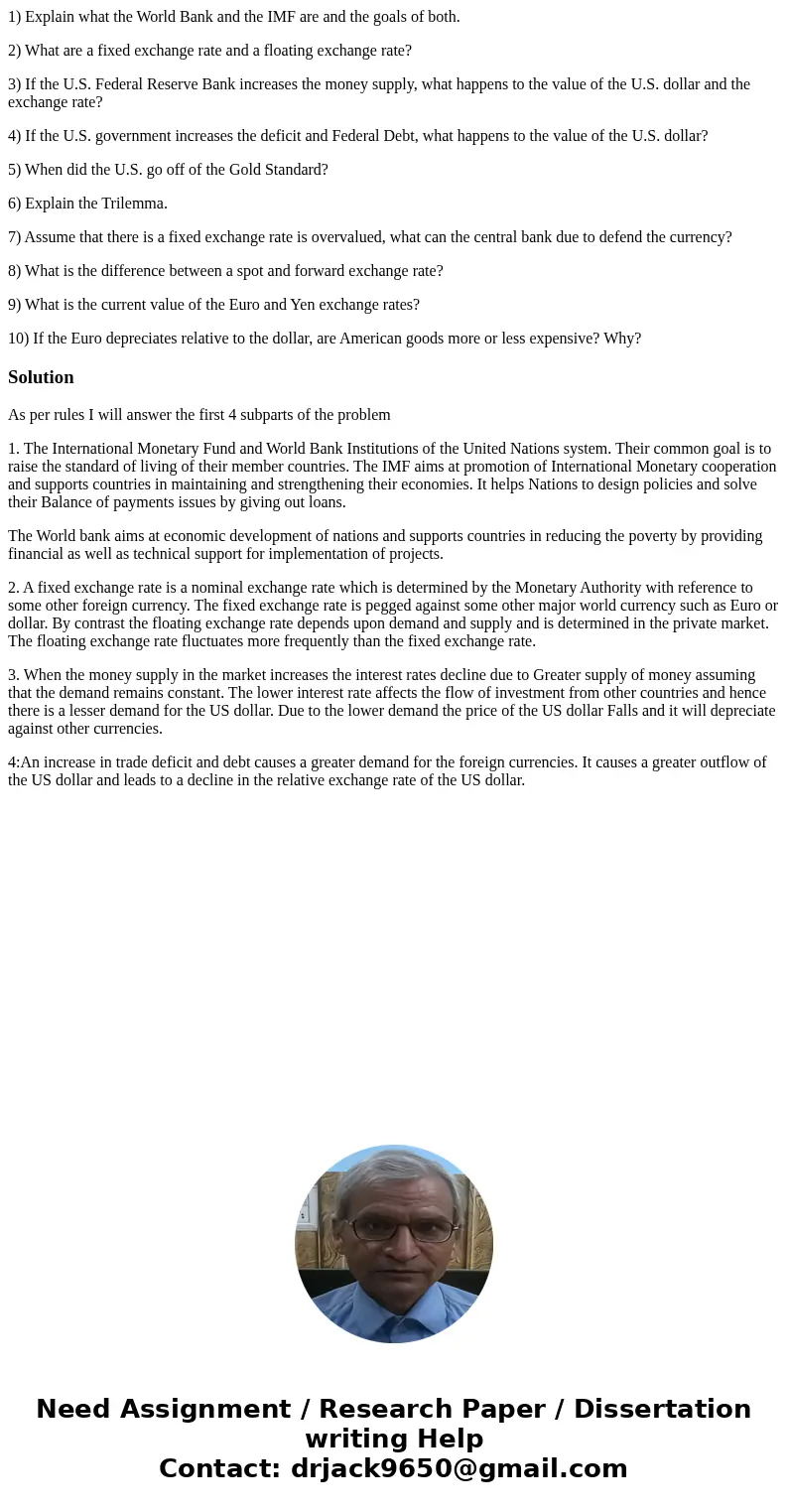1 Explain what the World Bank and the IMF are and the goals
1) Explain what the World Bank and the IMF are and the goals of both.
2) What are a fixed exchange rate and a floating exchange rate?
3) If the U.S. Federal Reserve Bank increases the money supply, what happens to the value of the U.S. dollar and the exchange rate?
4) If the U.S. government increases the deficit and Federal Debt, what happens to the value of the U.S. dollar?
5) When did the U.S. go off of the Gold Standard?
6) Explain the Trilemma.
7) Assume that there is a fixed exchange rate is overvalued, what can the central bank due to defend the currency?
8) What is the difference between a spot and forward exchange rate?
9) What is the current value of the Euro and Yen exchange rates?
10) If the Euro depreciates relative to the dollar, are American goods more or less expensive? Why?
Solution
As per rules I will answer the first 4 subparts of the problem
1. The International Monetary Fund and World Bank Institutions of the United Nations system. Their common goal is to raise the standard of living of their member countries. The IMF aims at promotion of International Monetary cooperation and supports countries in maintaining and strengthening their economies. It helps Nations to design policies and solve their Balance of payments issues by giving out loans.
The World bank aims at economic development of nations and supports countries in reducing the poverty by providing financial as well as technical support for implementation of projects.
2. A fixed exchange rate is a nominal exchange rate which is determined by the Monetary Authority with reference to some other foreign currency. The fixed exchange rate is pegged against some other major world currency such as Euro or dollar. By contrast the floating exchange rate depends upon demand and supply and is determined in the private market. The floating exchange rate fluctuates more frequently than the fixed exchange rate.
3. When the money supply in the market increases the interest rates decline due to Greater supply of money assuming that the demand remains constant. The lower interest rate affects the flow of investment from other countries and hence there is a lesser demand for the US dollar. Due to the lower demand the price of the US dollar Falls and it will depreciate against other currencies.
4:An increase in trade deficit and debt causes a greater demand for the foreign currencies. It causes a greater outflow of the US dollar and leads to a decline in the relative exchange rate of the US dollar.

 Homework Sourse
Homework Sourse